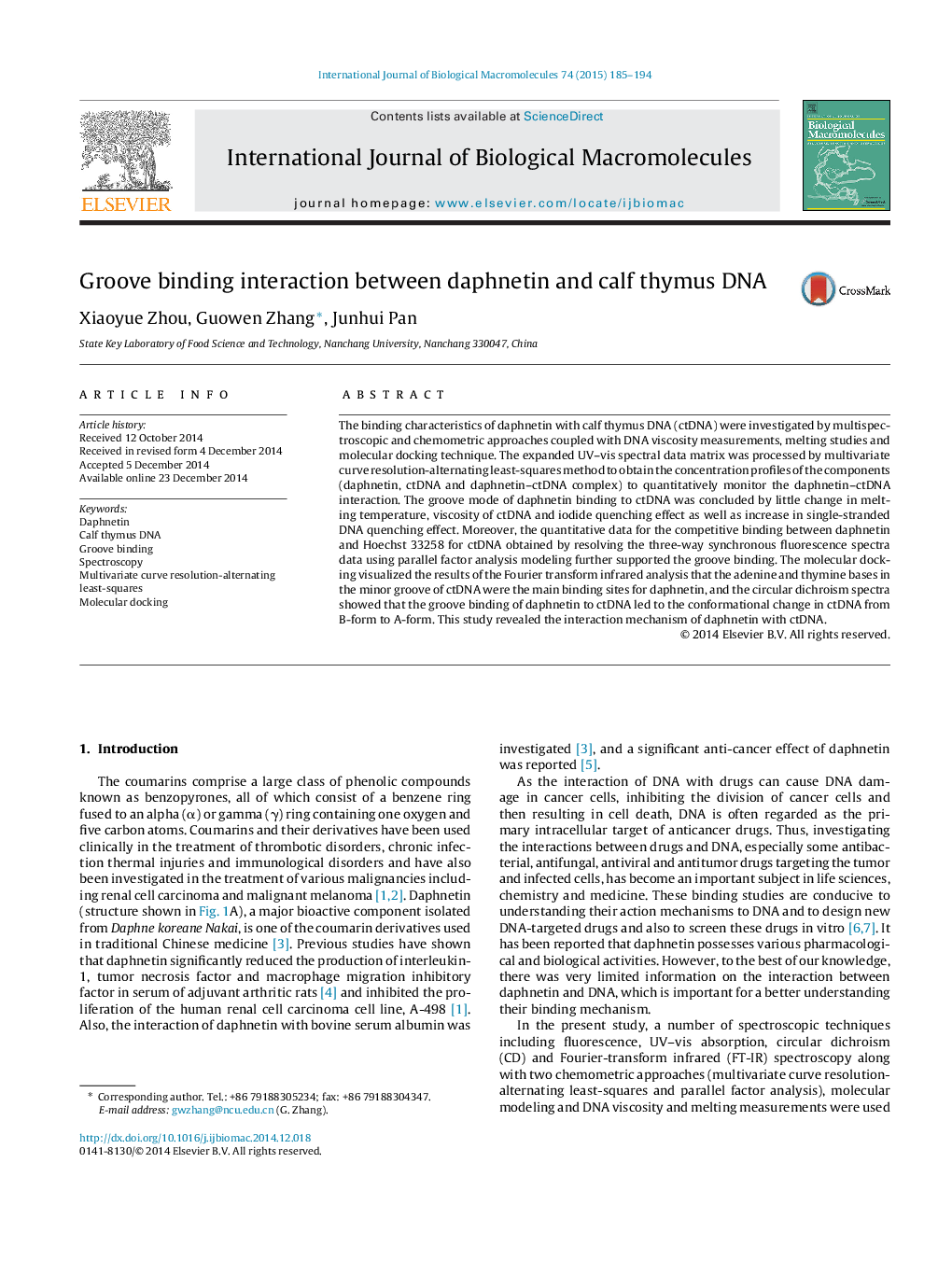| Article ID | Journal | Published Year | Pages | File Type |
|---|---|---|---|---|
| 8331872 | International Journal of Biological Macromolecules | 2015 | 10 Pages |
Abstract
The binding characteristics of daphnetin with calf thymus DNA (ctDNA) were investigated by multispectroscopic and chemometric approaches coupled with DNA viscosity measurements, melting studies and molecular docking technique. The expanded UV-vis spectral data matrix was processed by multivariate curve resolution-alternating least-squares method to obtain the concentration profiles of the components (daphnetin, ctDNA and daphnetin-ctDNA complex) to quantitatively monitor the daphnetin-ctDNA interaction. The groove mode of daphnetin binding to ctDNA was concluded by little change in melting temperature, viscosity of ctDNA and iodide quenching effect as well as increase in single-stranded DNA quenching effect. Moreover, the quantitative data for the competitive binding between daphnetin and Hoechst 33258 for ctDNA obtained by resolving the three-way synchronous fluorescence spectra data using parallel factor analysis modeling further supported the groove binding. The molecular docking visualized the results of the Fourier transform infrared analysis that the adenine and thymine bases in the minor groove of ctDNA were the main binding sites for daphnetin, and the circular dichroism spectra showed that the groove binding of daphnetin to ctDNA led to the conformational change in ctDNA from B-form to A-form. This study revealed the interaction mechanism of daphnetin with ctDNA.
Related Topics
Life Sciences
Biochemistry, Genetics and Molecular Biology
Biochemistry
Authors
Xiaoyue Zhou, Guowen Zhang, Junhui Pan,
